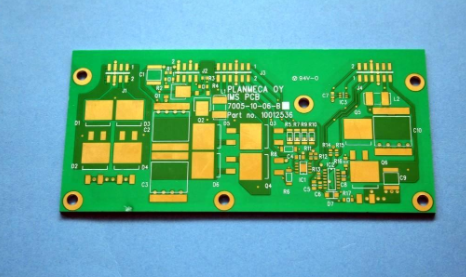The circuit board factory answers you PCB classic questions

First of all, some people will wonder why circuit board manufacturers use high Tg materials when producing circuit boards? Our circuit board manufacturers have a lot of expertise in the production of circuit boards, here is the answer:
First of all, I must say that high Tg refers to high heat resistance. With the rapid development of the electronic industry, especially the electronic products represented by computers, the development of high functionality and high multilayers requires higher heat resistance of PCB substrate materials as an important guarantee. The emergence and development of high-density mounting technologies represented by SMT and CMT have made PCBs in small apertures, fine lines, and thinner. The production of circuit boards in our circuit board factories is increasingly inseparable from the high heat resistance of substrates. support.
PCB substrate materials not only soften, deform, and melt at high temperatures, but also exhibit a sharp decline in mechanical and electrical properties (I don't think you want to see this in your own products). Therefore, the difference between general FR-4 and high Tg FR-4 is the mechanical strength, dimensional stability, adhesion, water absorption, and thermal decomposition of the material in the hot state, especially when heated after moisture absorption. There are differences in various conditions such as thermal expansion, and high Tg products are obviously better than ordinary PCB substrate materials.
What is a reversed copper foil substrate
Traditional electroplated copper skin has two parts: a smooth surface and a roughened surface. Generally, in the use of circuit boards, the roughened copper surface is connected to the resin, so as to generate tension and make the resin and the copper foil have a strong bonding force, but Because the roughness of the roughened surface is relatively deep, if the roughened surface is made on the surface of the circuit board, the uniform rough surface can be directly attached to the dry film in the future, and a good bonding force can be achieved without too much pretreatment. Therefore, the copper skin supplier tries to invert the rough surface of the copper skin and the smooth surface is additionally treated with a strengthened combination. This usage is the so-called inverted copper skin usage, and because the roughness of the smooth surface is very low, Therefore, it is easier to etch and clean when making thin circuits, which is beneficial to the production of thin wires of the circuit board factory and the improvement of the yield. Therefore, some circuit board manufacturers have begun to make such applications.
What is RCC and its use
RCC is Resin Coated Copper, the Chinese translation is called "attached resin copper skin" or "resin coated copper skin". It is mainly used in the manufacture of HDI Board-High Density Interconnection Board. Circuit board manufacturers can produce Materials that increase the production capacity of high-density small holes and fine lines. Because the small hole production includes not only the piercing work, but also the electroplating work of the blind hole. Because blind hole plating is basically different from through hole plating, it is more difficult to replace the chemical solution, so the thickness of the dielectric material is also reduced as much as possible. In response to the needs of these two production characteristics, it happens that RCC can provide these production characteristics, so it is adopted.